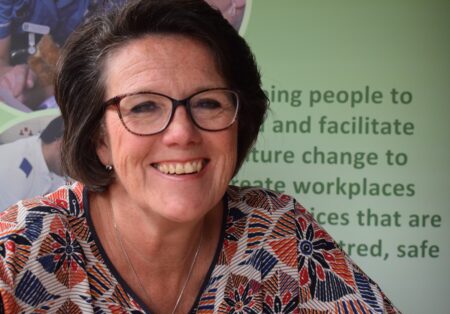Home News & Views Inspections: do they prove or improve care?
Inspections: do they prove or improve care?
Jo Odell, FoNS Practice Development Facilitator

Last week, I worked with a nursing team who had experienced what they described as an ‘internal inspection’, to see how they were delivering care against a set of nursing standards. I suspect (although I don’t know ) this was to gather evidence to assure senior leaders within the organisation that all was well from a governance and safety perspective. However, the result was that the nurses were left feeling, demoralised, dispirited and deflated as they didn’t ‘pass’ against the standards, which are often based on the documentation of care rather than the care itself. When chatting to the nurses they also described being fearful and afraid of talking to the people on the inspection team. But don’t get me wrong, I believe all care should be safe and compassionate.
To help them through this experience we undertook a ‘claims ,concerns and issues’ exercise. This helped everyone to work together to celebrate (make claims about) what they felt was going well with the care they give to people, but also raise their concerns. This led them to balance out the positive aspects with the negative aspects. And also enabled them to develop several questions (issues) from their concerns and to create a shared action plan which they developed together. The nursing team left our session feeling energised and ready to initiate their actions to enable them to pass their next inspection.
Why do organisations in both health and social continue to do this to their teams?
I don’t believe this was an unusual experience, for nursing teams tell me about this all the time. My theory is that evidence is gathered to prove how care is being delivered rather that to improve how care is delivered. I wrote about this in my blog on the Friends and Family test on 29 January. The problem is not the tool used to gather the evidence, whether it be an inspection team, an audit or the friends and family test, it’s how they are used and who is involved in using the tool. The people who have the power to improve the care are the people that deliver that care, but they are often the people who are not empowered with skills and confidence to do this by organisations.
One actions in the shared action plan, was for them to undertake their own observations of care. This is a great way for all members of the team to step back from the business of delivering care to see and hear what patients, families and visitors experience in their own area: A way to get a different perspective and see what others see. However, more importantly it’s a great learning experience which will enable people to change behaviours and to spot issues that then can be remedied by the team.
However, I suspect inspections will continue to be a feature of both health and social care. But the way in which they are used and delivered could be looked at within organisations. Team members can be involved in these, both within their own clinical areas and visiting other areas. The two methods described above, using a claims, concerns and issues exercise and/or an observation of care on regular basis, would enable teams to be self-regulating and then peer inspections could be used to validate this evidence. Above all, the wellbeing for both staff and patients is equally important and only happy and motived staff will be able to provide safe and effective care.
Comments are closed.

